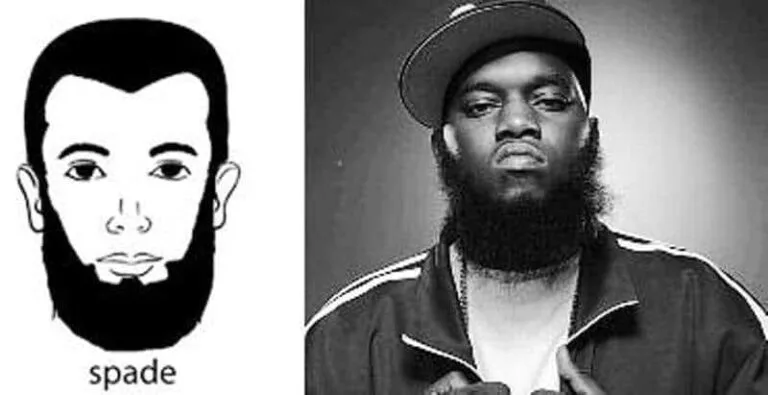Why Do Some People Have Red Beards But Not Red Hair?
Have you ever wondered why your beard is red, but your hair is not? This question likely comes to mind when you notice a color difference between your beard and hair. Your beard may be a darker shade of red than your hair, or the colors might be completely different—such as a red beard with brown hair, blonde or black hair.
Alternatively, you might notice a multi-colored beard, like red hairs sprouting within your black beard. This might lead you to ask: why do men get red hairs in their beards?
So, if you’re puzzled about why this color difference could occur, this guide will cover everything you need to know about the science behind beard and hair color genetics. It will provide answers to all your questions, such as why some men have different colors for their beard and hair, or why some have random red hairs in their beards.
We’ll also explore the rare phenomenon of beard turning red while your hair color remains unchanged.
The Science Behind Beard and Hair Color
To understand the reasons behind different beard and hair colors, as well as why facial hair turns gray, we have simplified the science behind these phenomena.
Key points of the science behind beard and hair color:
- Hair color is determined by the amount and type of melanin in the hair.
- There are two main types of melanin: eumelanin and pheomelanin. Eumelanin is black pigment, while pheomelanin is red pigment.
- Different combinations of black and red pigment (eumelanin and pheomelanin) can result in various hair colors, including shades of brown, black, blonde, red, and everything in between.
- The production of melanin is influenced by genetics, specifically genes that control the activity of melanocytes.
- These genetic factors determine the baseline hair color that an individual will have.
- The MC1R gene controls the production of melanin. Mutations in the MC1R gene are the reason behind the beard turning red.
- The MC1R genes that control hair color on the head and beard are different. This is why it is possible for someone to have a red beard but not red hair on their head.
- The amount of pheomelanin produced by melanocytes can vary in individual hair follicles. This is why some people have red hair in their black beard.
What determines hair color?
The color of your hair is determined by a pigment called melanin. Melanin is produced by cells called melanocytes, which are found in hair follicles. The amount and type of melanin present in the hair follicles determine the color of the hair.
There are two main types of melanin: eumelanin and pheomelanin. Eumelanin is responsible for dark brown to black hair colors, while pheomelanin contributes to yellow and red hair colors.
The production of melanin is influenced by genetics, specifically genes that control the activity of melanocytes. Different combinations of genes can result in various hair colors, including shades of brown, black, blonde, red, and everything in between. These genetic factors determine the baseline hair color that an individual will have.
Hair color can change over time. This is because hair follicles go through a natural cycle of growth, rest, and shedding. As we age, the activity of melanocytes can decrease, leading to a reduction in melanin production. This is why many people experience graying hair as they get older.
What is the MC1R gene?
The MC1R gene is a gene that controls the production of melanin. Mutations in the MC1R gene can affect the production of melanin, which can lead to changes in hair color. For example, mutations in the MC1R gene can cause red hair, blonde hair, or gray hair.
The MC1R gene is located on chromosome 16 in humans. It is a single-nucleotide polymorphism (SNP) gene, which means that it has a single change in the DNA sequence. This change can affect how the gene works and can lead to different hair colors.
Normally MC1R genes produce eumelanin, which is the pigment that gives black color to hair. When the MC1R gene is mutated, it can lead to the production of pheomelanin, which is what causes red hair.
What other factors can affect hair color?
In addition to the MC1R gene, there are a few other factors that can affect hair color, including:
- Sun exposure: The sun’s ultraviolet (UV) rays can break down melanin, which can lead to hair becoming lighter. The effect of UV rays on hair color is more pronounced in people with lighter hair, as they have less melanin. This is why people with blonde hair are more likely to experience sun-damaged hair than people with darker hair.
- Hormones: Testosterone can stimulate the production of melanin, for example, it can increase the production of pheomelanin, the pigment that gives red hair its color.
- Medical conditions: Some medical conditions, such as thyroid problems and anemia, can affect hair color.
- Diet: A diet that is deficient in certain vitamins and minerals can affect hair color.
Why Is Your Beard Red But Your Hair Isn’t?
The key reason behind your red beard is your unique genetic makeup. The genes that determine your beard color produce more pheomelanin than eumelanin, which is responsible for your red beard. These genes were passed down to you from your parent or ancestors and they made your beard red!
Pheomelanin makes up for lighter shades in your hair, and eumelanin makes up the darker shades. A certain balance between the two gives you black, brown, red, or even blonde hair.
In order to have red hair, you need to have two copies of the mutated MC1R gene(both from mom and dad), which is responsible for producing pheomelanin. On the other hand, you only need one copy (from any parent) of the mutated MC1R gene to have red beard hair. That is the reason a red beard is more common than red hair.
Also, the genes that determine hair color on the head and beard are often different. This is why it is possible for someone to have red hair and not a red beard, or a red beard and not red hair.
In some cases, the genes that determine the color of the beard produce more pheomelanin than the genes that determine the hair color on the head. This is why some people have black or brown hair with red beards.
So, if you have a red beard despite having brown or black hair, it is because the genes of your beard hair are producing more pheomelanin than the genes of your head hair.
What Causes Beard To Turn Red
Your genetic makeup can completely alter your beard hair’s color, which can even kick in later in life. So, you could initially have a black beard, which eventually grows into a red beard.
But when answering the question, “why my beard turned red?” There can be factors other than genetics that can contribute to your red beard. These external factors can include the sun, smoking, and stress. Being out in the sun for too long means that the sun’s UV rays will be able to penetrate and damage your beard hair.
As a result of UV damage, your hair will start to lighten, and it can cause your hair to turn a lighter shade of red. You can easily avoid this by being careful and avoiding the sun or using the right products to protect your beard from sun exposure.
A lack of various nutrients means that an individual’s hair would not get enough melanin, which would cause their hair to redden. You can still grow red hair if you have a mineral deficiency. The red hairs will just be few and far between.
Why Do You Have Red Hairs in Your Black or Brown Beards?
A simple answer to this question is you have red hairs in your black or brown beard because some individual beard hair genes are producing more pheomelanin than the rest. So those individual hairs are turning red while other hairs are black.
As mentioned earlier, external factors like the sun, stress and smoking can change the color of your beard, but it mostly comes down to genetics.
The MC1R gene can manifest differently, even in small patches or strands of red hair in your beard. The sun and stress can affect the amount of melanin your body produces, which can usually lead to white hair.
But if you have the genes sunburn and stress will turn your beard red. As sun exposure will be more or less in individual hair strands, and it will cause red hairs in black beards.
How to Deal with Red Hairs in Black Beards?
Having a little bit of red in your beard can be a little distracting, or it can look a little unkempt. Luckily, there are plenty of ways to solve the issue of having red hair in your black beard.
Pick Them Off with Tweezers
If these red hairs are just a few and far between, then you can pick them off with a tweezer. This could result from UV rays, lack of nutrients, or even genetics.
Regardless, a few strands here and there will look alright if you have a full beard. You should be careful, though, since you don’t want to break the hair. You can just pull gently and be patient with it coming out.
Trim Your Beard
The red hairs in your beard will usually only be noticeable when you grow it out. No one will notice those tiny red hairs without growing out your beard. So why not try out some new beard styles to keep both a light beard and make sure that you look good?
Dye Your Beard
Now if that bright red beard is bothering you, and there are just too many red hairs to pluck out, you can always dye your beard. Choose a shade that fits you best, and make sure that you contact a professional to properly color your beard and give it that proper texture.
Accept the Red Hairs
Finally, you could just accept the red hairs. Everyone’s beard is a little different, and you can really stand out when you embrace the redness in your beard.
Another reason you might consider embracing your red beard is that it is rare. So, if you manage to grow one, you should consider keeping it.
Related Topics:
25 Brown Hair with Red Beard Styles to Rock in 2024
18 Striking Blonde Hair and Red Beard Styles for 2024
So, Plenty of factors like the sun, smoking, and stress can make your beard red and head hair color different. But, most of it really comes down to just your genetics.






